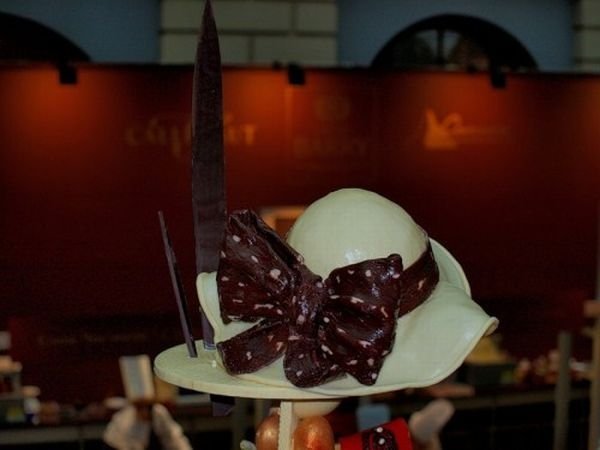|
|
Chocolate Food Art
|
VI - 36 °C (97 °F) - Hard, takes weeks to form.
Making chocolate considered "good" is about forming as many type V crystals as possible. This provides the best appearance and texture and creates the most stable crystals so the texture and appearance will not degrade over time. To accomplish this, the temperature is carefully manipulated during the crystallization.
Generally, the chocolate is first heated to 45 °C (113 °F) to melt all six forms of crystals. Next, the chocolate is cooled to about 27 °C (81 °F), which will allow crystal types IV and V to form. At this temperature, the chocolate is agitated to create many small crystal "seeds" which will serve as nuclei to create small crystals in the chocolate. The chocolate is then heated to about 31 °C (88 °F) to eliminate any type IV crystals, leaving just type V. After this point, any excessive heating of the chocolate will destroy the temper and this process will have to be repeated. However, there are other methods of chocolate tempering used. The most common variant is introducing already tempered, solid "seed" chocolate. The temper of chocolate can be measured with a chocolate temper meter to ensure accuracy and consistency. A sample cup is filled with the chocolate and placed in the unit which then displays or prints the results.
|
|









